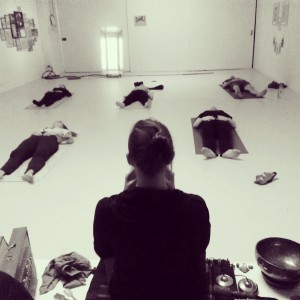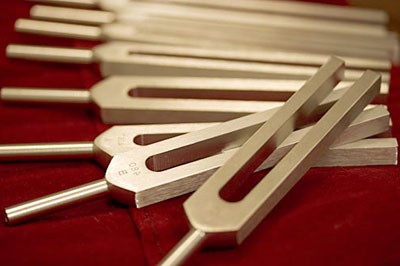BLOG: what’s so great about *sound baths*
#SoundBaths are becoming quite trendy lately. So what’s up with that?
Why are they so popular? And what is really going on??
So glad you asked! 🙂
 Our bodies naturally respond to sound — and that response varies depending on how we engage with the sound. We spend a lot of time (especially here in the city) blocking out sounds (i.e. sirens, car alarms, construction, squealing trains, etc.), which wears on our nervous systems. It takes far more energy to filter / resist / block out sound than it does to receive and allow sound to flow through us. Sound baths and other types of therapeutic sound work give us an opportunity to practice opening our bodies and minds to listen & receive sound in a space that is safe and contained. In doing so, we allow vibration to support our bodies and minds in releasing stress, restoring balance, and furthering the healing process.
Our bodies naturally respond to sound — and that response varies depending on how we engage with the sound. We spend a lot of time (especially here in the city) blocking out sounds (i.e. sirens, car alarms, construction, squealing trains, etc.), which wears on our nervous systems. It takes far more energy to filter / resist / block out sound than it does to receive and allow sound to flow through us. Sound baths and other types of therapeutic sound work give us an opportunity to practice opening our bodies and minds to listen & receive sound in a space that is safe and contained. In doing so, we allow vibration to support our bodies and minds in releasing stress, restoring balance, and furthering the healing process.
 Typically, sound baths are like “horizontal concerts,” wherein participants are lying down on the floor with blankets and pillows as the facilitator creates a soundscape by playing various kinds of instruments, including Himalayan & crystal singing bowls, flutes, drums, tuning forks, gongs, shakers, chimes, and their own voices. Sometimes facilitators offer a meditation, intention, or guided visualization as part of the session as well.
Typically, sound baths are like “horizontal concerts,” wherein participants are lying down on the floor with blankets and pillows as the facilitator creates a soundscape by playing various kinds of instruments, including Himalayan & crystal singing bowls, flutes, drums, tuning forks, gongs, shakers, chimes, and their own voices. Sometimes facilitators offer a meditation, intention, or guided visualization as part of the session as well.
The degree to which we engage with the sound is directly related to its efficacy. When the intentional application of sound is combined with other meditative / holistic practices –such as yoga or acupuncture– the active, refined, & sustained attention on the body and breath, engendered by those modalities, enhances our listening to & with the subtle energy of the body. This primed listening makes us more receptive to sound, which can then deepen our awareness and allow us to get more out of the practice. One of the most important benefits of engaging our bodies and minds with sound in a participatory way is that it connects us the inner silence –a kind of meta listening– within each of us, what is known in yogic traditions as “anahata nada” or “the unstruck sound.” This experience is most potent in the silence after the sound, when the vibration is still being integrated by the body and mind and this dance of movement within stillness (& vice versa) reveals deeper levels of presence and awakening.
 Each experience of a sound bath is different in & of itself every time, and for every participant. When I work / play with sound, it is all improvisation utilizing different instruments, which is dependent upon what sounds emerge from my listening to the space, time, and presence in the moment. In acupuncture sound sessions, an acupuncturist administers a general treatment, stimulating points throughout the body to awaken the flow of energy through the body’s meridians. Sound enhances this awakening as the stimulated points are more sensitive to physical vibration and, because vibration is energy in motion, this helps “move things along.” This is a less active experience on the conscious level, but the subconscious listening of the body is highly engaged, so sound in conjunction with acupuncture can produce considerable benefits.
Each experience of a sound bath is different in & of itself every time, and for every participant. When I work / play with sound, it is all improvisation utilizing different instruments, which is dependent upon what sounds emerge from my listening to the space, time, and presence in the moment. In acupuncture sound sessions, an acupuncturist administers a general treatment, stimulating points throughout the body to awaken the flow of energy through the body’s meridians. Sound enhances this awakening as the stimulated points are more sensitive to physical vibration and, because vibration is energy in motion, this helps “move things along.” This is a less active experience on the conscious level, but the subconscious listening of the body is highly engaged, so sound in conjunction with acupuncture can produce considerable benefits.
Actively listening and allowing the sounds to move through you can be very relaxing, but it isn’t always pleasant. Sound affects everyone differently and can evoke a vast array of sensations and types of imagery (i.e. visuals, tastes, smells, memories, etc.). In fact, the experience of the same sound may be blissful for one person and quite disturbing for another person. If you experience discomfort, it is recommended to focus on your breath, try to relax, and let the sound move through you instead of resisting it. If the discomfort does not pass or is somehow unbearable, it is often okay to step outside of the room for a moment until you feel a bit better.
Another important thing to know is that sound is very efficient in altering consciousness, so it is not unusual to feel a bit “out of it” after attending a sound bath. Chatting with people, drinking lots of water, eating a bit, and other grounding activities can be helpful afterwards for returning to a more normal state of mind.
 I think it is important for people to work with sound regularly — whether that be by attending sound baths or by developing their own personal sound/meditation practice. John Beaulieu, one of my teachers, who developed the method of Human Tuning with his BioSonic tuning forks, teaches that we have to keep tuning and re-tuning ourselves to manage stress in our lives so that it doesn’t evolve into distress and cause compounded issues. Sound is an exceedingly efficient and effective tool for achieving physical homeostasis, mental clarity, and emotional harmony. So, working with sound regularly helps us to restore mental, physical, and energetic balance as we continually navigate the curve balls of life.
I think it is important for people to work with sound regularly — whether that be by attending sound baths or by developing their own personal sound/meditation practice. John Beaulieu, one of my teachers, who developed the method of Human Tuning with his BioSonic tuning forks, teaches that we have to keep tuning and re-tuning ourselves to manage stress in our lives so that it doesn’t evolve into distress and cause compounded issues. Sound is an exceedingly efficient and effective tool for achieving physical homeostasis, mental clarity, and emotional harmony. So, working with sound regularly helps us to restore mental, physical, and energetic balance as we continually navigate the curve balls of life.
It’s wonderful to see that people are turning to a more holistic view of well-being, considering aspects of mental health, stress management, and interpersonal dynamics as part of their overall health, in addition to & interconnected with their physical health. This causes us to look to more integrated modalities of health and healing that encompass and address all of these aspects, such as yoga, meditation, and sound. My hope is that this is an indication that we are broadening our consciousness not only of our multi-faceted selves, but also of the nature of our interconnectedness with each other and our planet.



